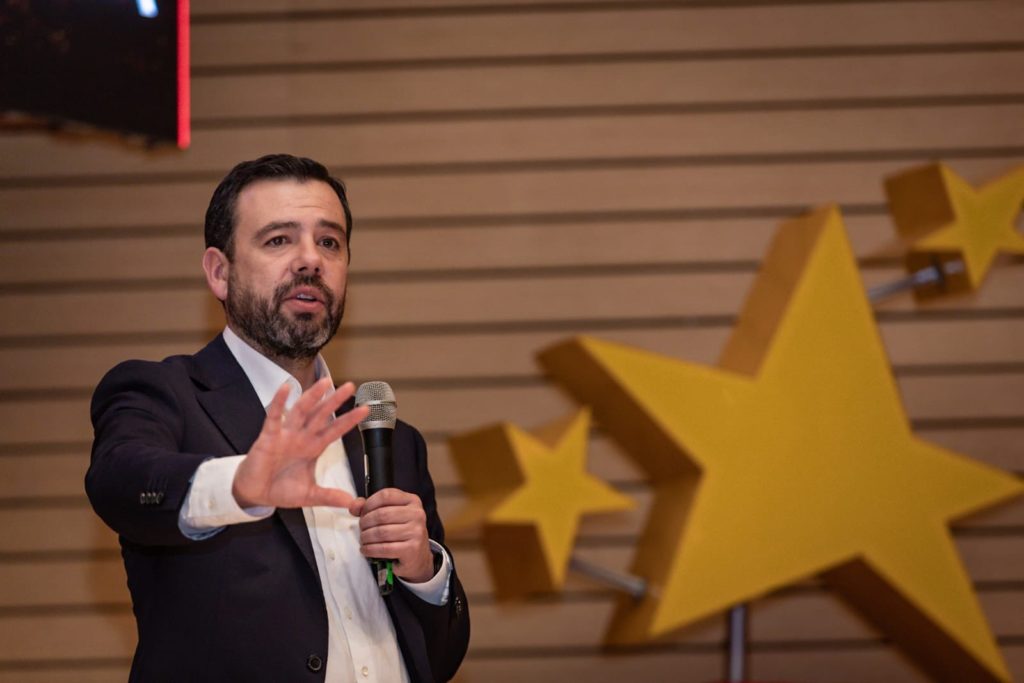
Bogota mayor Carlos Galan, revealed plans yesterday, April 4, for water rationing in Colombia’s capital. This decision comes as the city’s reservoirs, crucial for its water supply, have hit their lowest levels in 40 years. The severe El Nino weather pattern, active since last November, is to blame for the dwindling water reserves.
Galan announced that the measures will be implemented as of next Monday, April 8, and although he has not made any reference to the effects on the electric power service, some experts point out that supply cuts are inevitable, despite repeated denials by the national government. It should be recalled that most of Colombia’s electricity production is made from hydroelectric plants.
The situation will affect not only Bogota but also neighboring municipalities that are fed by the same water resource, the Chingaza dam. Cities such as Soacha, La Calera, Chia, Funza, Mosquera, Tocancipa, Gachancipa, Cajica, and Madrid will also take special measures given the “red alert” situation.
Low reservoir levels
Although the rainy season has already begun and in recent days there have been several episodes that have even caused some flooding problems, water reserves in the reservoirs are breaking records in the negative. According to what the capital’s mayor said yesterday, the levels have not been so low for forty years.
“We have extremely low levels in the Chingaza system. Chuza, for example, is at the lowest level since 1984. We are in a critical situation, a red alert, and that is why we have to take measures,” Galan explained. This reservoir has a capacity of 220 million cubic meters, with water captured from the Guatiquia and Chuza rivers and the Leticia stream. In addition, the aqueduct has catchments in the El Mangon stream, which is part of the Blanco River basin. Located 55 km from Bogota by road, the Chuza reservoir has a useful life of approximately 25 years. It is located at an altitude of 2990 meters, in the basin of the Chuza River, a tributary of the Guatiquia.
Despite the special measures that have saved about one cubic meter per second of drinking water since January, the conclusion is that it has been “insufficient”, according to the mayor. Among these, the mayor’s office decided to capture water from the Bogota River that is treated at the Tibitoc plant.
Rationing by zones starts next week
In the absence of official information, which will be provided on April 8, it is known that water rationing in Bogota will be carried out in nine sectors and at times yet to be defined, although it will not be at the same time throughout the city.
“We are analyzing schedules and zones, and an announcement will be made on Monday [April 8],” explained the mayor of Bogota to the media, who also announced special measures for schools and hospitals.
It is surprising that, even though the country has been in a drought phase for six months, such a short period has caused a crisis of such a size, to the point of causing water supply cuts in the country’s capital.
The filling levels of the reservoirs continue to fall, even though the rains have already made their presence felt in April, as befits the beginning of the rainy season. In this sense, the Chingaza dam system, the main one that supplies water to Bogota, has gone from a reserve of 22.75% to 16.19% in one month. In the other two systems, which also carry water to the city (although at a lower flow), the reserves have also decreased. Specifically, in the northern system, the decrease has gone from 57.30% to the current 55.40%, and in the southern system, in thirty days, the reserve has gone from 59.74% to 42.82% in April.

Doubts about power supply problems
Although the president of Energy Group of Bogota, Juan Ricardo Ortega, states that “power cuts are just around the corner”, the Colombian government’s Minister of Mines and Energy, Andres Camacho, stated that, for the time being, there is no risk of blackout and that the level of the reservoirs has allowed the production of energy to continue as normal.
“So far, there is neither a risk of shortage nor risk of blackout. But of course, this is a sensitive period that requires all the monitoring that we already do every week. We have to work together with territorial entities and we hope that citizens will also help us to get through this last phase of the El Nino phenomenon”, said the minister.
The reality is that the threat of power cuts in the capital keeps many companies on tenterhooks, due to the serious effects that this situation would have on production and daily work, with the prospect of serious economic losses.
Call to save water
Similarly, this morning, the mayor repeated a call to citizens to save water. “The reservoirs that supply water to Bogota are now at critical levels. Since it came into operation in the early 1980s, the Chuza reservoir – the axis of the Chingaza System, which supplies 70% of the city’s water – has never been so low. We need to change our habits to guarantee that water is enough for everyone in Bogota,” wrote Carlos Galan on his social networks.
“Let’s save water! An invitation to everyone, everyone. Even those who believe that climate change, the critical situation of reservoirs for several years, and the impacts of a very strong El Nino phenomenon can be reversed in 3 months. To everyone,” said the chief executive of the capital city.
See all the latest news from Colombia and the world at ColombiaOne.com. Contact our newsroom to report an update or send your story, photos and videos. Follow Colombia One on Google News, Facebook, Instagram, and subscribe here to our newsletter.

